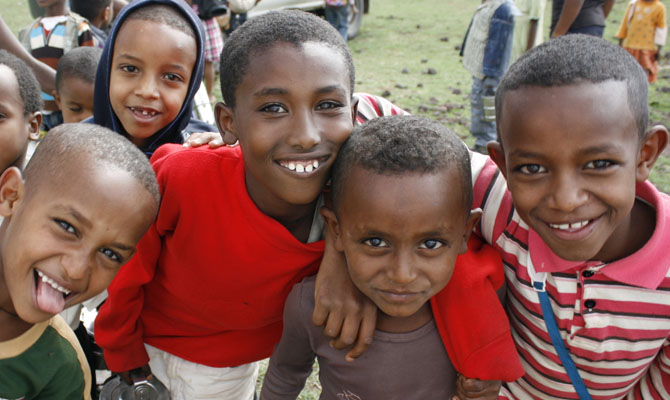Ethiopia Our history
In Ethiopia since 1980, CUAMM in the beginning started his intervention fighting the leper in Gambo. Today one of the priorities of the organization is the mother-child health, with the project “Mother and children first”.

1980
The first CUAMM doctor is deployed in Ethiopia, at the leper colony of Gambo.
1984-1985
The entire country is hit by an extremely widespread famine.
1985
A project backed by the Italian Ministry of Foreign Affairs more firmly consolidates CUAMM’s presence in Gambo.
1987
The leper facility is considerably extended to become a hospital to all effects and purposes and a reference centre in the fight against leprosy in the Arsi region.
1996-1998
CUAMM implements a care and rehabilitation project for the war wounded in the region of Tigray.
1997
A memorandum of understanding is signed between the Ethiopian Catholic Church, the local government of Oromia Region and CUAMM for the project at St. Luke’s Hospital of Wolisso and the annexed nursing and midwifery school.
2000
Inauguration of St. Luke’s Hospital in Wolisso. CUAMM also works in the Southern Nations Nationalities and Peoples’ Region, where the maternity wards of Dubbo and Geto are set up and managed. CUAMM’s intervention strategy is focused on Southwest Shewa Zone (Oromia Region), giving priority to interventions to reduce mother-child mortality.
2012
The “Mothers and children first” project gets underway to guarantee access to safe child delivery and neonatal care in 4 Africa countries (Angola, Ethiopia, Tanzania and Uganda).
2014
Collaboration with the Ethiopian Catholic Secretariat continues at the national level to strengthen management of the country’s diocesan health facilities. The majority of interventions are concentrated in Southwest Shewa Zone, at the hospital and nursing and midwifery school of Wolisso and in the surrounding districts. A new project has been set up to consolidate mother and child healthcare services in South Omo Zone.